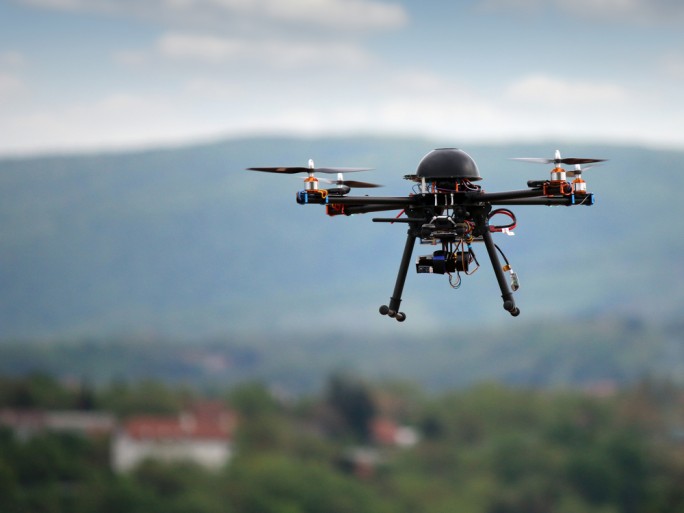Amazon Wants ‘Sky Highways’ For Its Delivery Drones

Amazon uses NASA conference to propose dedicated drone air routes that would keep manned flights safe from drones and speed up deliveries
Amazon has outlined its intentions to create ‘drone highways’ in the sky for its planned delivery drones.
On Tuesday, the retail giant proposed creating sections of US airspace specifically reserved for unmanned aircraft. The routes would both speed up delivery flights as well as keep commercial aircraft safe from drones. In the future, Amazon hopes these slices of free airspace would cover the world’s cities, allowing drones to go about their delivery business unhindered.
High-speed transit zone
Amazon described its proposal at a conference held by NASA in California. The plan detailed a “high-speed transit zone” that would be used by drones between 200 and 400 feet above the ground. The drone airspace would be controlled by an automated computer system, said Amazon.
 “The development of an air traffic system that fully enables the safe operations of small unmanned aircraft systems (sUAS) in civil airspace, particularly highly-automated vehicles operating beyond line of sight (BLOS), is essential for realising the enormous benefits of this technology in a safe and responsible manner,” said Amazon in its proposal. “A good place to start in creating such a system is to clarify the use of this airspace.”
“The development of an air traffic system that fully enables the safe operations of small unmanned aircraft systems (sUAS) in civil airspace, particularly highly-automated vehicles operating beyond line of sight (BLOS), is essential for realising the enormous benefits of this technology in a safe and responsible manner,” said Amazon in its proposal. “A good place to start in creating such a system is to clarify the use of this airspace.”
In the United States alone today, there are 85,000 commercial, cargo, military and general aviation flights every day. Amazon reckons that this figure will be “dwarfed” by low altitude sUAS flights in the next 10 years.
“As a result of these factors, Amazon believes the current model of airspace management will not meet future sUAS demands, particularly highly-automated, low-altitude commercial operations,” said Amazon. “A paradigm shift in airspace management and operations is necessary to safely accommodate the one-operator-to-many-vehicle model required by large-scale commercial fleets.”
Amazon said that airspace below 200 feet, known as the ‘low-speed localised traffic area’, would be reserved for non-transit operations such as surveying, videography, and inspection. The space would also be reserved for operations for “lesser equipped” vehicles, for example drones without sophisticated sense and avoid (SAA) technology.
The airspace between 400 and 500 feet will serve as a permanent ‘No Fly Zone’ in which sUAS operators will not be permitted to fly, except in emergencies.
But Jean-Christophe Zufferey, CEO of mapping drone manufacturer senseFly, told TechWeekEurope that it is important any such highways not inhibit other professional drone operations.
“The key to any future airspace integration is that it doesn’t prohibit professional, approved UAV operators, such as surveyors, farmers and engineers, from safely flying and managing their systems in this airspace in order to collect the data they need to do their work,” said Zufferey.
“This is the kind of business-friendly direction we see most regulators moving in today, usually based on the use of lightweight systems and line-of-sight operations.”
Patent application
In May, the US Patent Office has published the Amazon’s application for the “aerial delivery of items”, which was originally filed in September 2014. The patent opens up a lot more information on the proposed drone delivery service, including the fact that the drones will ‘talk to each other’ to ensure a successful delivery.
This includes the reception of information on the delivery environment (presumably weather, traffic, obstacles, etc.) from other drones to update their routes in real time, determining if their flight paths and proposed landing areas are safe and free of obstacles (like people or dogs).
The application also includes a mockup of an Amazon order screen with four options for delivery: “Bring It to Me,” “Home,” “Work,” and “My Boat”, showing that the company wants this to be as flexible as possible.
Using location data pulled from a user’s smartphone, package delivery locations will be updated in real-time as customers move around, so your goods can come to you, depending on where you are when your shipment is ready.
